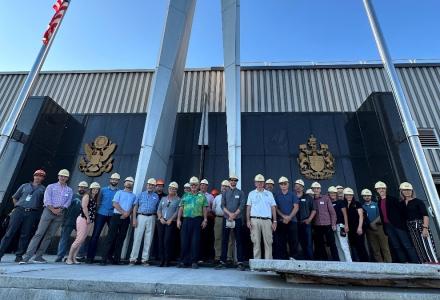
A species of fish called kiyi has evolved to see particularly well in deep parts of Lake Superior, giving it a significant advantage at those shadowy depths, according to recent research by the University of Buffalo.
For centuries, several species of fish known collectively as ciscoes (which includes kiyi) in the Great Lakes were an important part of the food web, eating small invertebrate species and being eaten by larger predatory fish such as lake trout.
Once among the most abundant group of prey fish species in the Great Lakes, ciscoes have had a hard time in recent decades. Over the past 100 years, several of these and other prey fish species suffered substantial decreases in population across the Great Lakes due to overfishing and invasive species, even being wiped out in some of the lakes. Populations of predatory and commercial fish species such as lake trout are affected by the abundance of these prey fish, which they have historically relied on for food.
Today, the kiyi’s range has shrunk to Lake Superior, though efforts are underway to reintroduce it into some of the lower Great Lakes (Michigan, Huron and Ontario). For this to be successful, however, fisheries managers need more information about how the fish lives and where it reproduces.
The University of Buffalo study looked at the DNA of kiyi and three other surviving species of cisco from Superior to learn more about the diversity of the species and their populations, said Trevor Krabbenhoft, assistant professor of biology at the university. Each of these cisco species prefers a specific water depth, with the kiyi preferring the deepest range of around 80-200 meters (262-656 feet). With all the Great Lakes but Erie having extensive deepwater areas where kiyi prefer to live, there are real opportunities for the species to thrive in the lower lakes.

The study found that kiyi are uniquely adapted for these deepwater environments due to their eyesight, which allows them to see “blue-shifted” light. In the context of the Great Lakes, this means they can see potential predators and prey particularly well in the low-light depths they prefer to live in, giving them an advantage over competing fish species.
Beyond vision, genetic work also has allowed Krabbenhoft and student Katherine Eaton, who worked on this project, to genetically identify kiyi eggs collected from Superior. Fish eggs can be difficult to differentiate, as can fish in their fry and larval stages, so this provides a tool to help figure out when and where kiyi prefer to spawn.
There is a separate, ongoing effort by the Great Lakes Fishery Commission to reintroduce kiyi to Lake Michigan. According to a talk given by Matt Herbert from The Nature Conservancy at the International Association for Great Lakes Research conference in 2020, sampling is underway in Lake Superior to learn more about when the species spawns, how successful it is and what spawning grounds the fish prefer.
While the COVID-19 pandemic has slowed the project, Herbert noted that as of the summer of 2020 they had learned that kiyi tend to spawn late in the year and have lower egg counts than bloater fish or other cisco species – meaning more pairs would be necessary for a successful reintroduction.
In Buffalo, Eaton said the tissue samples came from the US Geological Survey’s fish population monitoring survey. From there, Eaton was able to extract DNA to look at genes related to the eyesight of various cisco species. She found that a genetic variation specific to kiyi, known as an allele, allowed for the improved blue-shifted vision. The work started in the summer of 2019 and was completed a year later.
This study also confirmed that kiyi’s dark vision is a genetically encoded adaptation and not just an acclimation to a novel environment in individual fish, Krabbenhoft said. This means that the kiyi’s advantageous eyesight is something they evolved that other cisco species would not have.
This adaptation is particularly important for scientists to understand when considering the restoration of kiyi to the lower lakes. Unlike the deep cold waters of Lake Superior where nutrients and light are limited, the warmer, shallower lakes provide attractive habitat for invasive zebra and quagga mussels These voracious filter feeders devour swaths of plankton, reducing food for other species – especially those living in deeper offshore waters – while making water in the lakes clearer.
This in turn is a factor in large algal blooms that have been found in Lake Erie and several bays in other Great Lakes, and more sunlight stimulates photosynthesis, making it easier for benthic algae to grow in larger clumps and mats. The increased penetration of light into deeper, clearer waters may erode some of the kiyi’s low-light advantage, while the algae may play a role in affecting how kiyi hunt for food and avoid predators. Krabbenhoft said the impact of mussels and more algal blooms on kiyi is something that needs more study.
Warming temperatures also have led to less ice cover on the Great Lakes as a whole, which allows more light in during the winter months. This has impacted fish populations in the lower lakes, Krabbenhoft said, and in turn could complicate the evolutionary advantage of kiyi’s vision.
“We’re in the early stages of understanding how these (vision) changes are important,” Krabbenhoft said. “The question is how deep can you go before that blue-light shifted allele becomes a critical asset, and I don’t think we know the answer to that specifically for the other Great Lakes.”

Kevin Bunch is a writer-communications specialist at the IJC’s US Section office in Washington, D.C.




